It's very fast but a bit too top-heavy.
The Linksys Hydra Pro 6E lowers the barrier to entry for Wi-Fi 6E with AX6600 speeds and even a 5Gbps Ethernet port. Wi-Fi 6E brings with it support for 6GHz Wi-Fi, which is much faster compared to the 2.4GHz and 5GHz options available with Wi-Fi 6 and Wi-Fi 5. Wi-Fi 6E also enables more liberal use of 160MHz channels, even in areas with a lot of connections. This is thanks to 6GHz having many more available channels and it goes a long way towards adding the capacity we'll need in the next few years.
Unfortunately, there's not much reason for most people to upgrade, as 6GHz support is limited to a few select chipsets and only a handful of phones support it, including the Galaxy S21 Ultra and Asus Zenfone 8. That leaves this router with tons of untapped potential. Unless you're ready to move a significant portion of your home network to 6GHz, it's still too early to recommend. It's also worth remembering that Wi-Fi 6E upgrades are still only PCI-E with no USB options, meaning you'll need to be handy with computer hardware to even get a taste.
Linksys Hydra Pro 6E
Bottom line: The Hydra Pro 6E is one of the cheapest ways to get a taste of 6GHz Wi-Fi with 160MHz support while also keeping 5GHz and 2.4GHz options. Coverage can also be easily expanded with full support for Velop Intelligent Mesh routers.
The Good
- Tri-band Wi-Fi 6 speeds
- Setup is easy and quick with the app
- Passively-cooled utilitarian design
- Full support for Velop Intelligent Mesh expansion
- 5Gbps WAN port
The Bad
- 5GHz is slower than other Wi-Fi 6E routers
- Web browser settings are too basic and obscured
- Not a lot of devices support 6GHz
- Very expensive
Linksys Hydra Pro 6E: Price and availability
The Linksys Hydra Pro 6E first became available on Linksys.com in late April and is now also available at Best Buy and B&H. More retailers will be coming soon. This is a fairly expensive router with a suggested price of $499.99. This router isn't available worldwide at this time and is limited to just a handful of U.S. retailers. Even so, there aren't many Wi-Fi 6E devices available yet so most people will be find holding off a bit longer.
Linksys Hydra Pro 6E: What works
Visually, the Hydra Pro 6E looks a lot like the MR9600 we looked at before, but under the hood, it's a completely different beast. (It's also worth mentioning that Linksys has implemented 2-factor authentication in this version of the software which was one of the main complaints against its lookalike.)
The Hydra Pro 6E is a tri-band Wi-Fi 6E router with 2.4GHz, 5GHz, and 6GHz band support. Four of the eight streams are dedicated to the 6GHz band, allowing for a maximum 4,804Mbps link speed. The 2.4GHz and 5GHz channels split the remaining four streams allowing 600Mbps and 1,201Mbps, respectively. The 5GHz channel can be up to 80MHz wide and can be set to either one of the 5.2GHz or 5.8GHz channels.
This router has four open gigabit Ethernet ports for wired devices and the WAN port has a top speed of 5Gbps. This is great if you have an internet connection greater than 1Gbps or want to use this router as a wireless component in an existing multi-gig wired network. Unlike in some other routers, the multi-gig Ethernet port cannot be assigned as a LAN port. It's always used for the incoming connection.
There is also one USB 3.0 port for external storage using the Server Message Block (SMB) protocol, which can be accessed from most devices including Android phones with a compatible file explorer. Samsung's built-in My Files app, for example, can connect to network drives. Windows and Mac computers can also access the drive through Windows Explorer or Finder. File transfer on 5GHz Wi-Fi 5 had read speeds around 65MB/s and write speeds were closer to 50MB/s. It's not replacing a NAS but it's a solid option for a home media server.
If you're happy to use a single Wi-Fi name (SSID) for each band, the router will be able to steer your device to the most appropriate connection based on its needs. This is how the Linksys app sets things up by default. The only downside to this is that if you're connected to the wrong band, you may find your speeds unacceptably slow. The router will prefer a consistent connection with usable speeds over delivering the fastest possible connection.
You need to go into the web interface to get the option to separate your Wi-Fi bands as the app will automatically set your router up as a single SSID. A single name is a great idea for most people but I would still like to have the option during the initial setup to manage it myself.
I compared speed tests from three locations around my home on 500Mbps home internet. I was only able to test 2.4GHz and 5GHz this way as even these reasonably new phones lack Wi-Fi 6E support. Keep in mind that this is not a test of the phones and is only designed to show relative differences. Even so, this router was all over the place when it came to 5GHz performance.
2.4GHz results (two tests):
| Device | Living room (router) | Front room | Bathroom |
|---|---|---|---|
| LG V60 | 85.2 Mbps 81.6 Mbps |
89.4 Mbps 77.3 Mbps |
75.8 Mbps 100 Mbps |
| Galaxy S20+ | 82.9 Mbps 74.8 Mbps |
67 Mbps 85.2 Mbps |
99 Mbps 89.2 Mbps |
| LG G8 (Wi-Fi 5) | 69.1 Mbps 88.3 Mbps |
90.4 Mbps 92.9 Mbps |
92.2 Mbps 89.5 Mbps |
| iPhone 11 Pro | 88.9 Mbps 73.1 Mbps |
69.7 Mbps 70.5 Mbps |
74.7 Mbps 80.2 Mbps |
Speeds at 2.4GHz were about what you would expect and are reasonably in line with other tri-band AX6600 routers. All of these speeds would be completely usable.
5GHz (80MHz) results (two tests):
| Device | Living room (router) | Front room | Bathroom |
|---|---|---|---|
| LG V60 | 544 Mbps 546 Mbps |
372 Mbps 379 Mbps |
294 Mbps 296 Mbps |
| Galaxy S20+ | 515 Mbps 420 Mbps |
329 Mbps 332 Mbps |
310 Mbps 319 Mbps |
| LG G8 (Wi-Fi 5) | 319 Mbps 347 Mbps |
222 Mbps 263 Mbps |
212 Mbps 190 Mbps |
| iPhone 11 Pro | 423 Mbps 431 Mbps |
347 Mbps 313 Mbps |
218 Mbps 236 Mbps |
While I'm nearby the router, speeds are solid at 5GHz but they quickly fall off as I move away. Keep in mind that 5GHz Wi-Fi on this router only has two streams on 80MHz of spectrum to work with. This router isn't a great choice if you need the 5GHz speeds to hold up in a larger home.
This router delivers more than enough 5GHz speed for most of what people do online and many people don't even have internet connections that would challenge these speeds. Still, while using exclusively 2.4GHz or 5GHz, this feels like a much cheaper router, but if you can use 6GHz, that story changes.
While using exclusively 2.4GHz or 5GHz, this feels like a much cheaper router, but if you can use 6GHz, that story changes.
I upgraded my gaming desktop with an Intel AX210 Wi-Fi 6E PCI-Express card. This chip from Intel is much like the Wi-Fi 6 Intel AX200 with 6GHz support added in meaning it supports a maximum speed of 2.4Gbps when connected on a 160MHz band. Intel has released up-to-date Windows 10 drivers for the AX210 complete with 6GHz support, although Windows 10 has yet to enable the feature though it is in the works.
At the time of writing, neither the stable release nor beta release of Windows 10 supports 6GHz, but if you're willing to do a quick registry edit, you can enable the feature early. I don't recommend this for most people, but if you like to tinker and you know your way around Windows, you can find the right changes with a Google search. Just make sure you've backed up in case something goes wrong and you need to reinstall Windows. Nevertheless, I was able to get a taste of what Wi-Fi 6E can do.
Once connected, speeds were great on 6GHz Wi-Fi. Where my desktop normally resides in the room adjacent to the router, my download speed easily hit 536.93Mbps at speedtest.com. Not only that, uploading a file to the SSD connected to the Hydra Pro's USB port got a boost up to 125MB/s or around 1.2Gbps.
Moving into the TV room, things stayed fast on 6GHz but began to fall back on 5GHz.
| 5GHz | 6GHz | |
|---|---|---|
| Intel AX210 (Windows 10) | 228 Mbps 244 Mbps |
558Mbps 574 Mbps |
It makes a lot of sense that Linksys has seen fit to brand this as one of its Velop mesh routers. Linksys Velop routers are some of the best Wi-Fi 6 mesh routers you can get with great speeds and compatibility. Using this fast and vacant 6GHz spectrum for a mesh link can deliver unprecedented results even in congested areas. In a mesh, the relatively weak 5GHz performance would be ironed out and there would be more than enough bandwidth for the mesh link at 6GHz. Still, as a standalone router, a bit more 5GHz capacity could go a long way in easing the transition from Wi-FI 6 to Wi-Fi 6E devices.
Linksys Hydra Pro 6E: What falls short
One of the worst aspects of this router is the web interface. Setup is easy in the app, but if you want more advanced options, you have to find and click a blue "CA" link in the bottom right corner of the page. This will open up a similar page with many more options, including those that allow you to specify your Wi-Fi channel.
Even with these extra options enabled, it still falls short of the level of customization you can get in some of the competition. If you're looking for easy access to advanced controls, you'll be happier with something from TP-Link or Netgear. Still, everything in the web interface worked as expected and for many people, it's more than enough.
The distribution of resources on this router doesn't make sense for most people. The majority of its speed is locked to 6GHz devices. When it comes down to it, using this router with Wi-Fi 6 devices is like using an entry-level router which this is not. A massive 4.8Gbps of your 6.6Gbps total speed on this router is only accessible to 6GHz capable devices. That means the majority of your devices, even those with Wi-Fi 6, are looking at an AX1800 router like the MR7350.
While this is the cheapest and slowest Wi-Fi 6E router you can get right now, I still wish that 5GHz devices could get more out of it.
Linksys Hydra Pro 6E: Competition
The TP-Link Archer AX90 is an AX6600 Wi-Fi 6 router that delivers the same top speed as the Hydra Pro 6E on Wi-Fi bands that most new devices can take advantage of today. The AX90 also comes with TP-Link HomeShield software and OneMesh support for coverage expansion. A multi-gig Ethernet port helps you make the most of the fast wireless speeds.
Asus was one of the first to make a Wi-Fi 6E router with the ROG Rapture GT-AXE11000 and as usual, Asus isn't messing around. This is a 12-stream router with up to AX11000 speeds. It's the ultimate Wi-Fi 6E router. This router manages to keep 5GHz speeds high as well with 4804Mbps and 160Mhz support on both the 5GHz and 6GHz bands. At a suggested price of $549.99 compared to the Hydra Pro's $499.99, it's a worthy upgrade if you can put the speed to use.
Linksys Hydra Pro 6E: Should you buy it?
You should upgrade if ...
- You have upgraded your equipment to Wi-Fi 6E
- You have exceptional 5GHz congestion
- You want powerful mesh features in a router
You should hold off if...
- You don't have any 6GHz-capable devices
- You don't have much 5GHz traffic
- You need great wireless speeds on 5GHz devices
- You're on a budget
Only a handful of smartphones and computers support Wi-Fi 6E right now and even those that do still aren't 100% ready just yet. The Hydra Pro pushed most of its resources to 6GHz, which means most people won't be able to access the majority of its speed until they're ready to replace most of their Wi-Fi devices. Still, 6GHz gets you as close to Ethernet as possible even as more people begin to adopt it thanks to its vast reserves of spectrum.
The Linksys Hydra Pro 6E is a very fast router if you've got the equipment to use it to its full potential. Tri-band Wi-FI allows you to connect devices new and old with the greatest speeds reserved for full Wi-Fi 6E devices. A fast 5Gbps Ethernet port also makes sure this router will be able to keep up with even very fast wired networks. Still, it would have been nice to have some more 5GHz capacity since the majority of devices will be using it for the next couple of years.
If you're looking to add Wi-Fi 6E connectivity to your network, this router is a solid great option. Performance with 6GHz Wi-Fi 6E is incredible and the fact that it can keep those speeds up even in congested areas makes it even better. Still, the lack of Wi-Fi 6E devices limits its usefulness, and the difficulty of upgrading your PC to support it puts Wi-Fi 6E just out of reach for most people.
Linksys Hydra Pro 6E
Bottom line: The Hydra Pro 6E delivers great speeds at 6GHz while still offering 2.4GHz and 5Ghz bands for the majority of your devices. This router also supports Velop Intelligent Mesh so you can expand it with a Velop node while keeping standard router features like four Ethernet ports.


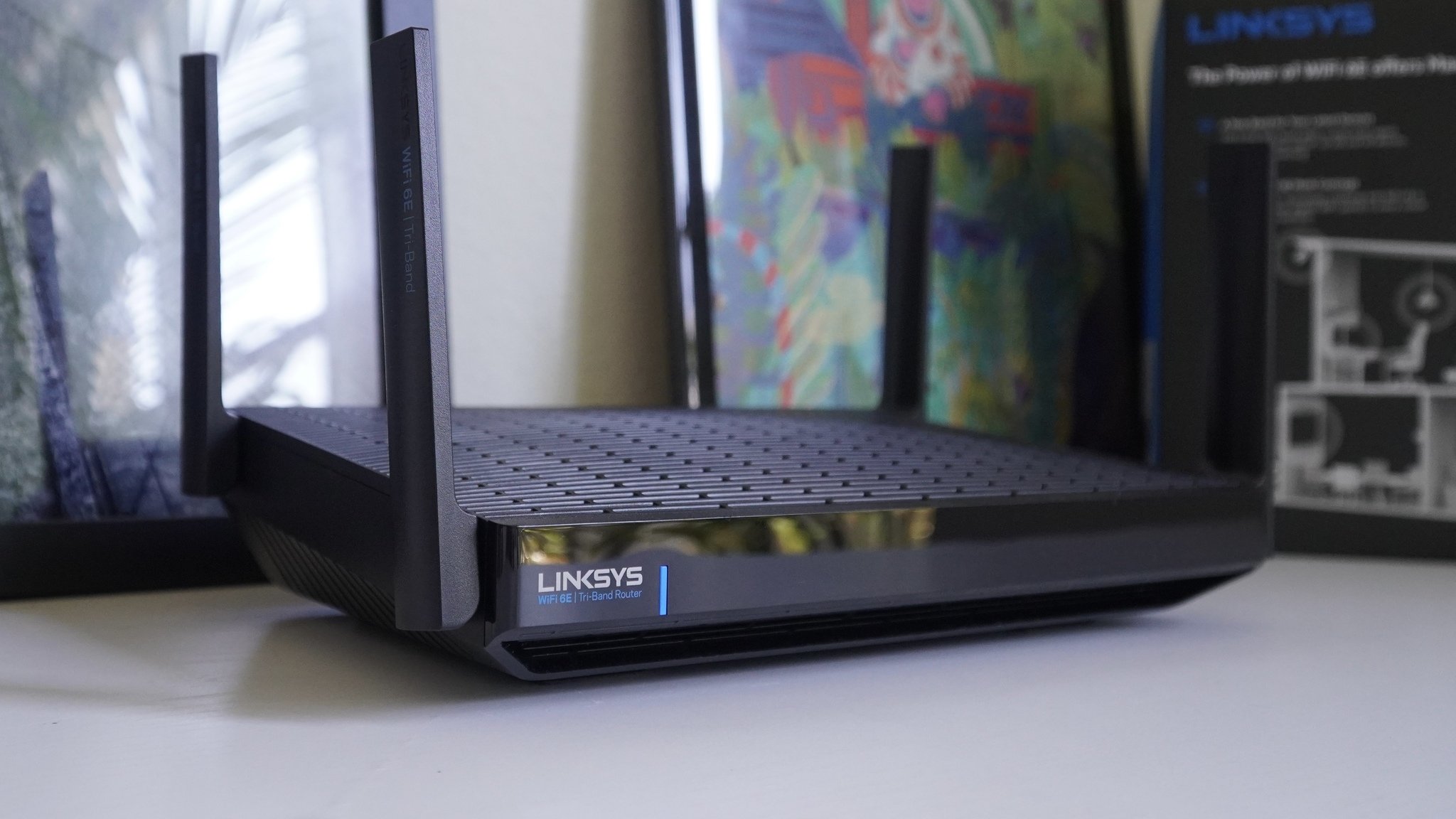
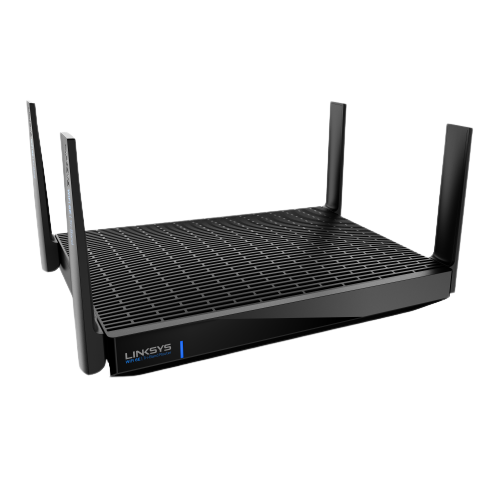
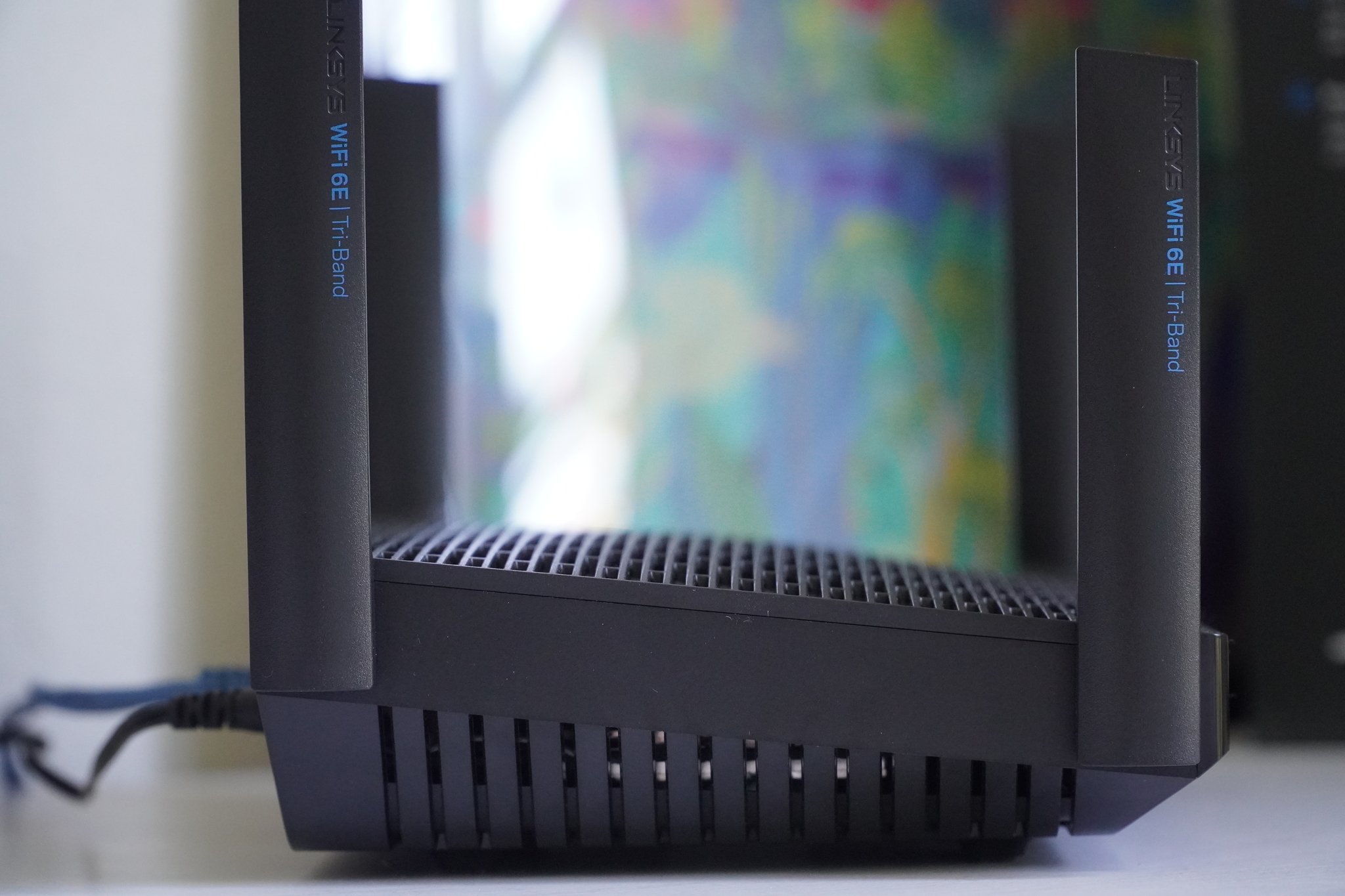

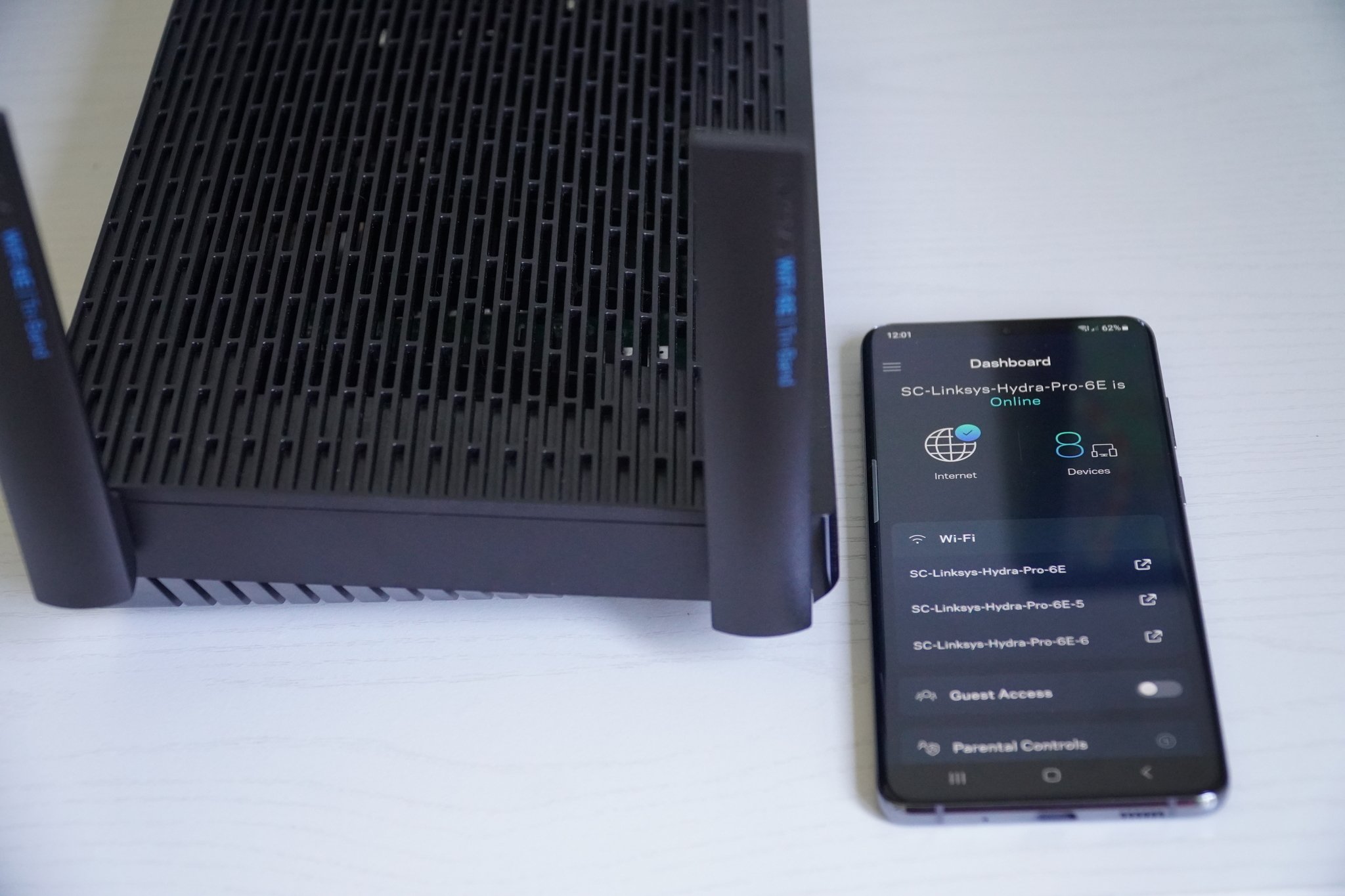
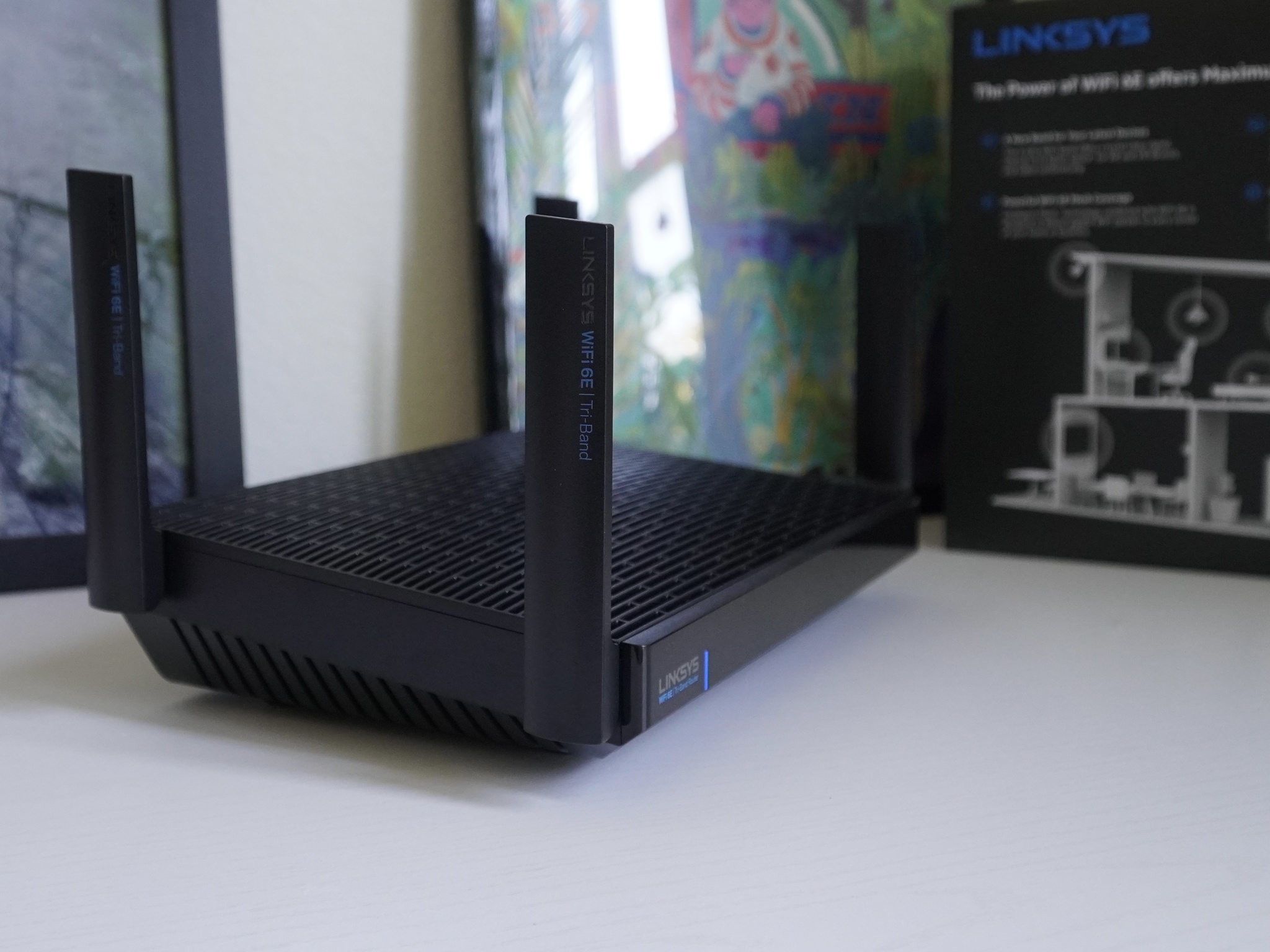
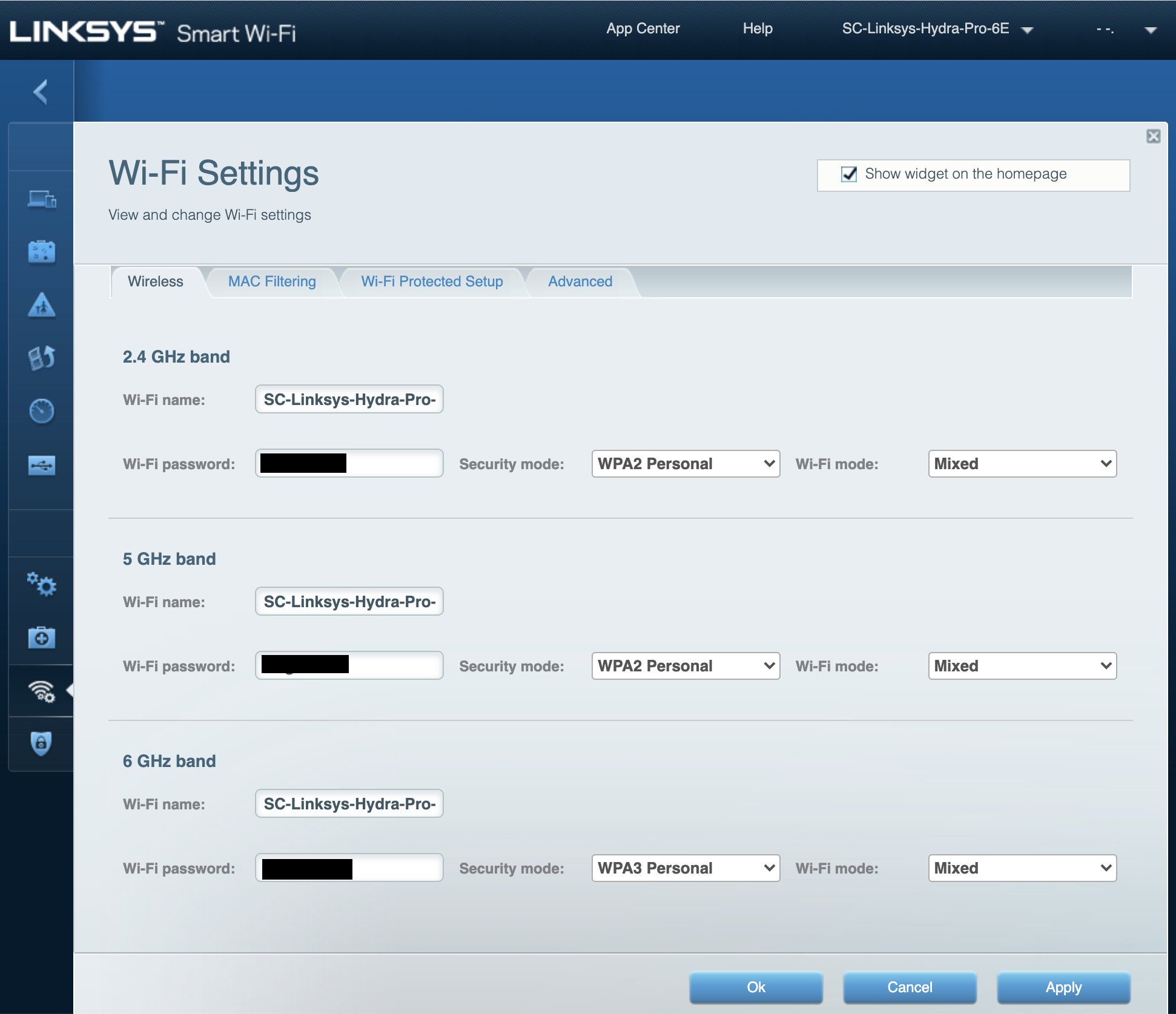
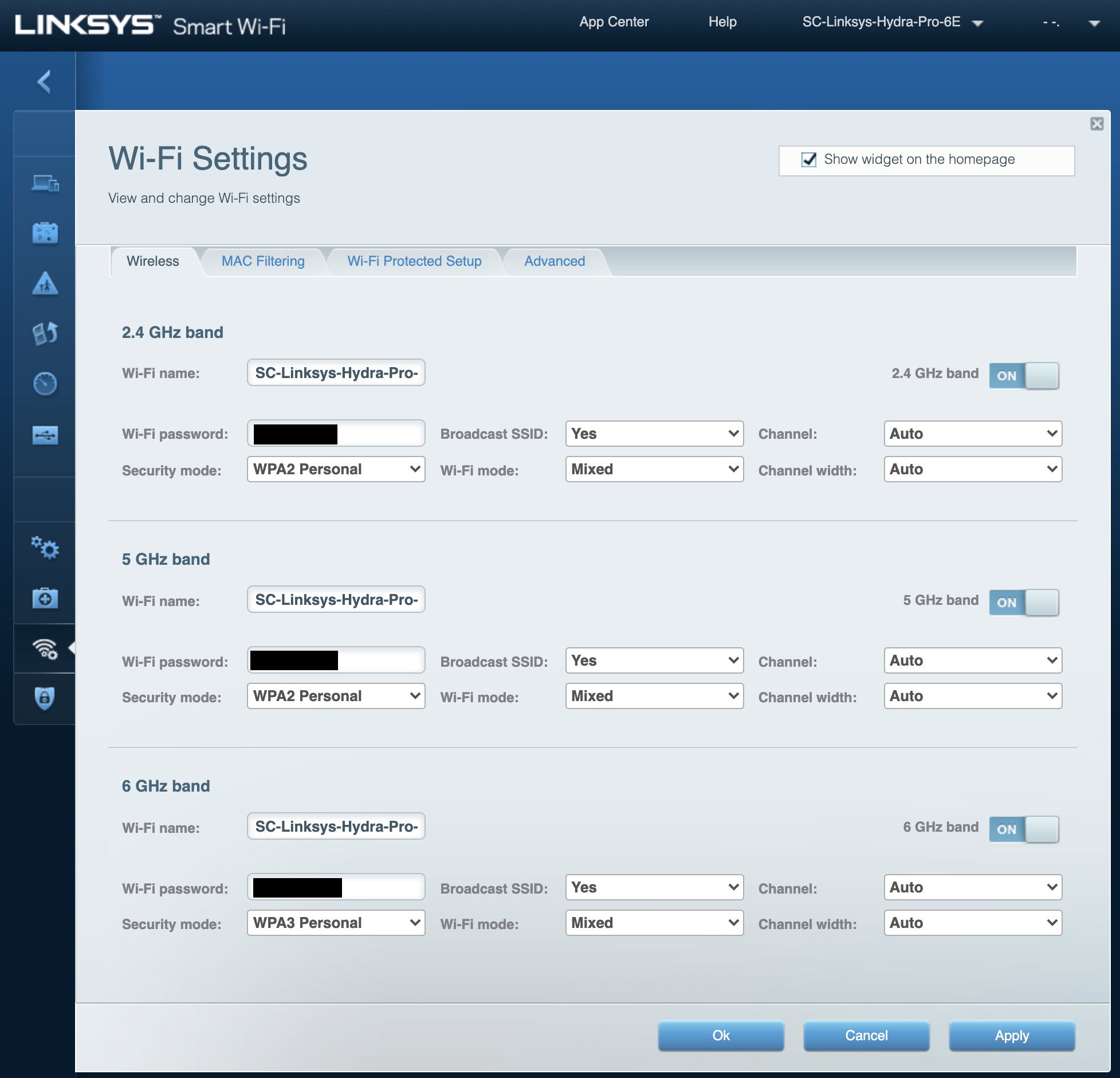
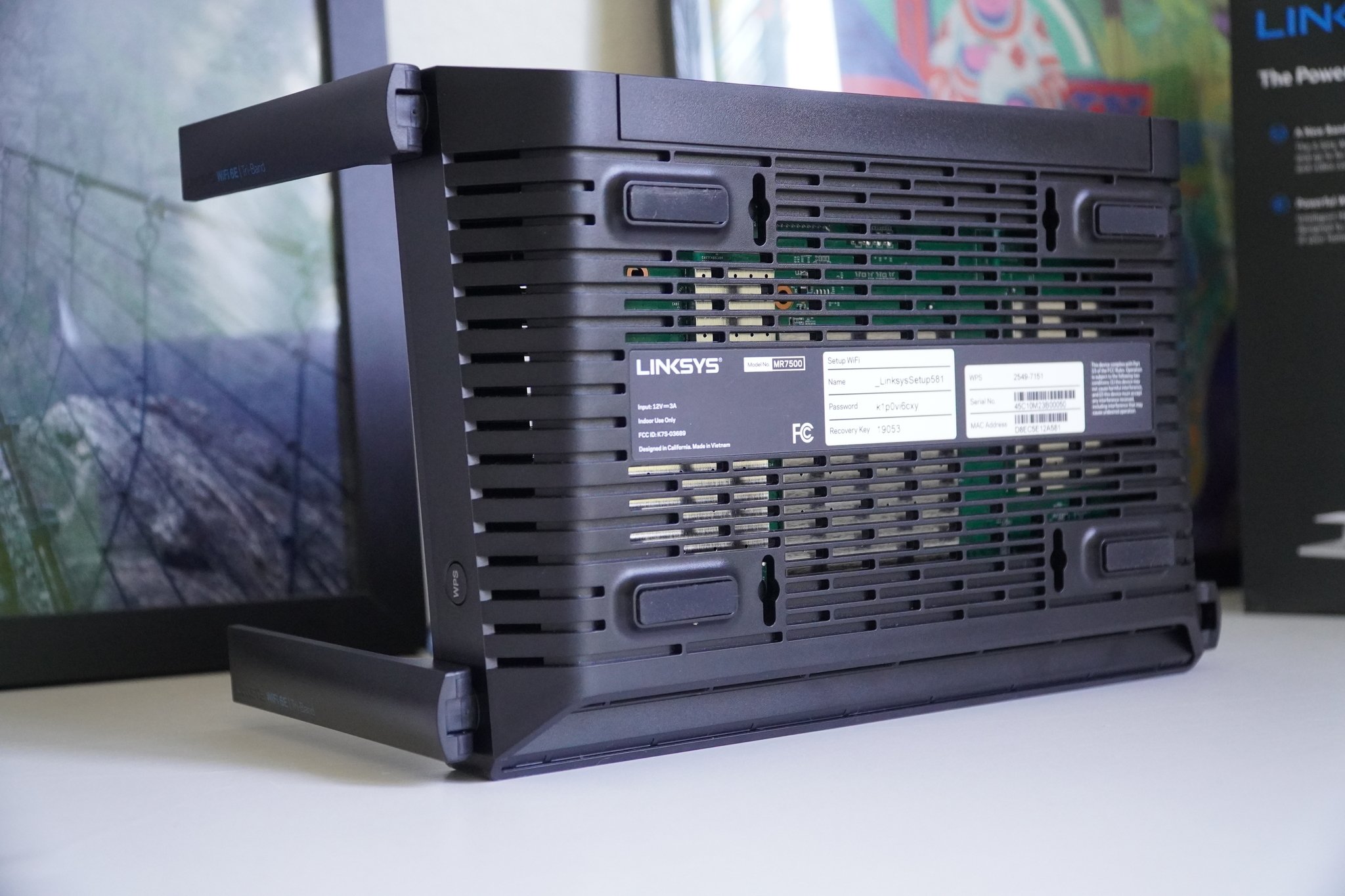
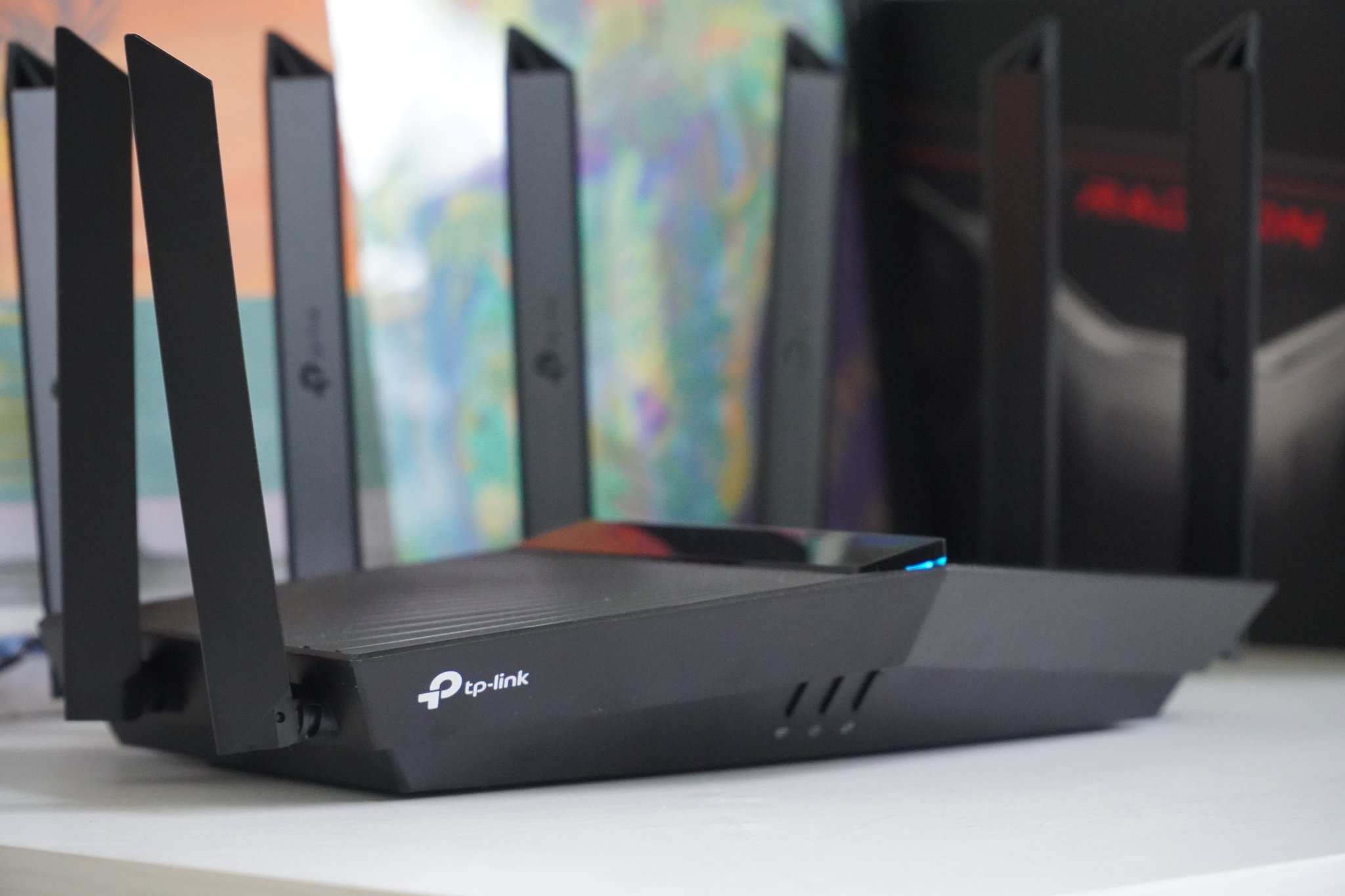

0 Commentaires